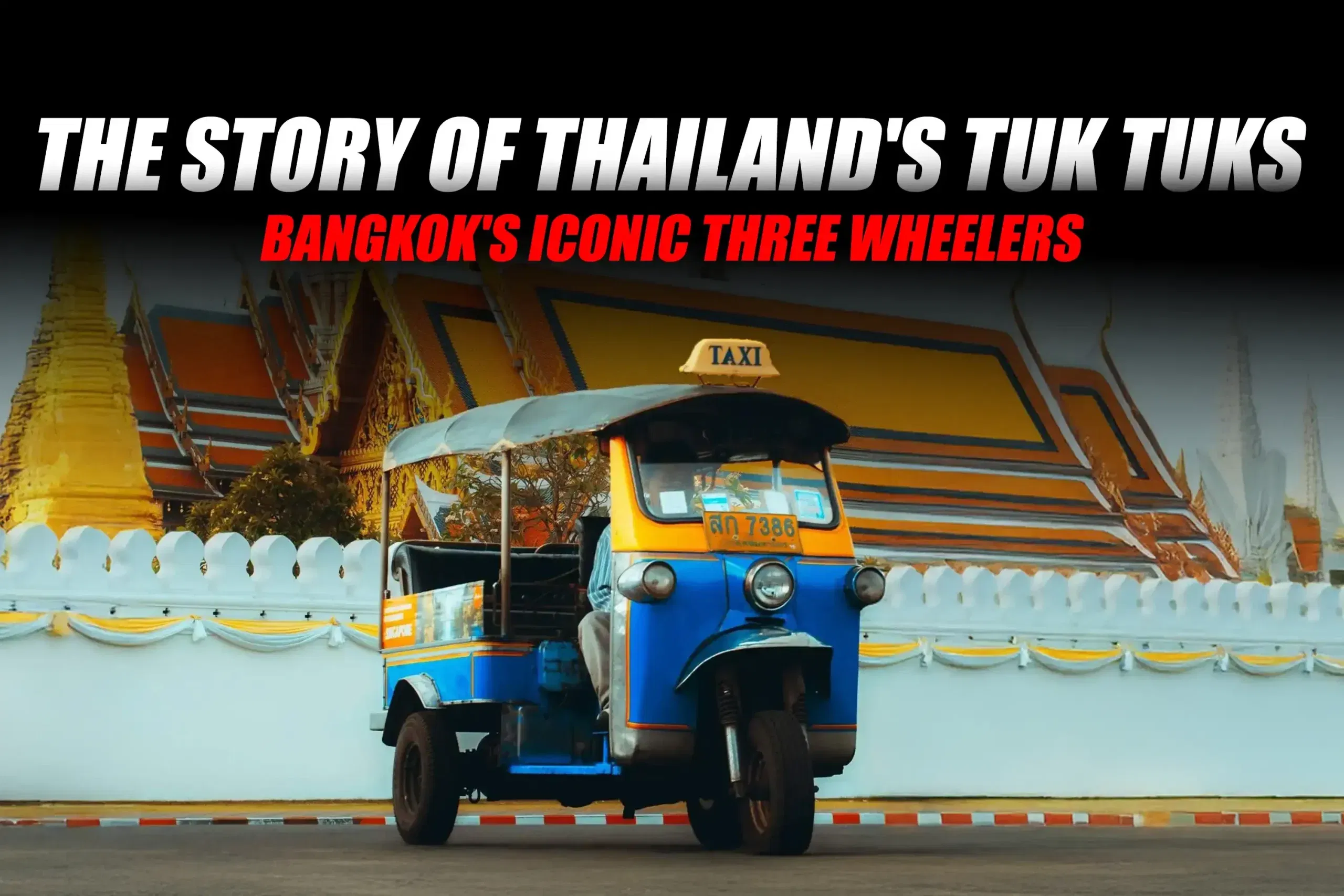Thailand features a vibrant street life. Tuk tuks, three wheeled vehicles fill the streets and represent Thai culture. They form an iconic part of the country’s urban transportation as they offer a distinct Thai experience.
A tuk tuk is a motorized rickshaw, it has three wheels and open sides. This design gives passengers an unobstructed view. It seats two or three passengers comfortably. The compactness of the vehicle makes it perfect for moving through busy streets and small streets and alleyways quickly and efficiently, where bigger vehicles would not be able to go.
What is a Tuk Tuk: Elaborate Description.
Tuk tuks are light weight small vehicles that use either a two-stroke or four-stroke engine. They have a covered round or rectangular shaped passenger area with cushioned seating. Tuk tuks are usually brightly painted with colors and decorations. The sides are open allowing for a nice breeze while the passenger can enjoy a panoramic view. They offer efficient transport in Bangkok, Phuket, Koh Samui, and Chiang Mai.
The average tuk tuk measures about 2.5 to 3 meters long and 1.5 meters wide. This compact size aids maneuverability in traffic jams and narrow streets. Their ability to weave through traffic makes them the quickest option for short city trips.
History of the Tuk Tuk
The tuk tuk originated in Japan in the 1930s. Early motorized rickshaws were exported globally, including to Thailand. Local needs prompted several modifications. The term "tuk tuk" imitates the sound of the small engine.
In Thailand, the tuk tuk grew popular after World War II. The country needed affordable, efficient transport for its growing urban population. By the 1960s, tuk tuks became common in Thai cities.
Regional Variations of Tuk Tuks in Thailand
The classic tuk tuk design appears nationwide. Regional variations reflect local requirements.

Bangkok Tuk Tuks are flashy and modern. They use bright colors and LED lights to attract tourists. Chiang Mai Tuk Tuks feature traditional Thai art and designs. They showcase local culture. Phuket Tuk Tuks are larger and more powerful. This handles the island's hilly terrain. Isaan Tuk Tuks are utilitarian and durable. They provide essential transport in the northeastern rural areas. Farmers use them to transport goods and passengers.
Other varieties include Tourist Tuk Tuks for sight-seeing and Cargo Tuk Tuks for transporting goods. Customized Tuk Tuks are specialized for function, for example mobile food stalls.
The Uses and Benefits of Tuk Tuks
Tuk-tuks are practical transportation and the Thai community use them for their affordable fares. They are most suitable for an inexpensive alternative for traveling within the city's short distance. People commonly use them for errands, market stops or work.
Tourists must ride a tuk tuk. The open air design offers an immersive and exhilarating experience. Tourists see, hear, and smell Thailand up close. Tuk tuks also aid sustainable tourism as their small size and low fuel consumption reduce traffic congestion and pollution.
Safety and Cultural Significance
Tuk tuks are generally safe, but passengers must take precautions. Agree on the fare beforehand to prevent disagreements, choose licensed drivers and hold personal belongings securely.
Culturally, tuk tuks symbolize Thai ingenuity and resilience. They appear in films and documentaries and show the spirit of Thai hospitality. Their design, history, and role in tourism are significant. A tuk tuk ride offers an authentic journey into Thai life and tradition.
- Stay updated with 91trucks for more articles and news.
- Subscribe to our YouTube channel.
- Follow us on Facebook, Instagram, and LinkedIn.









